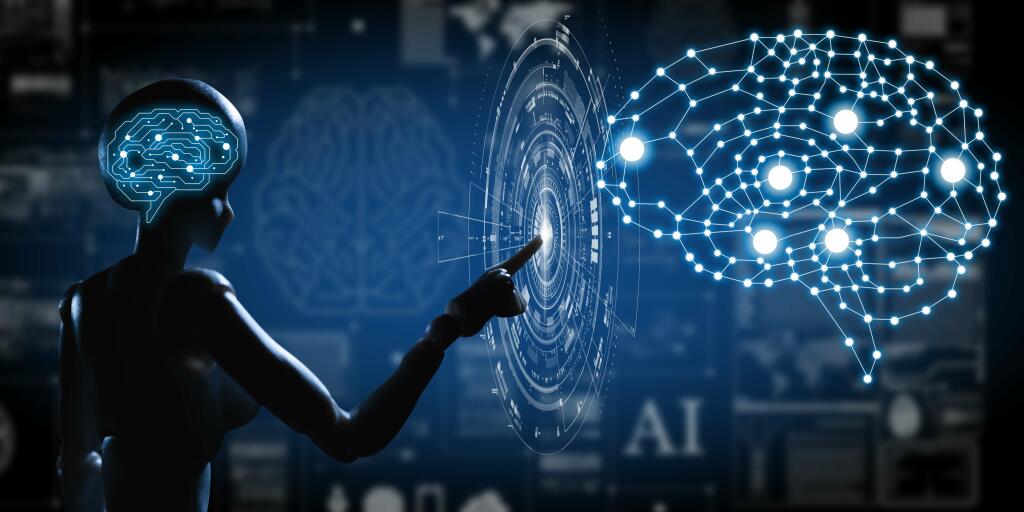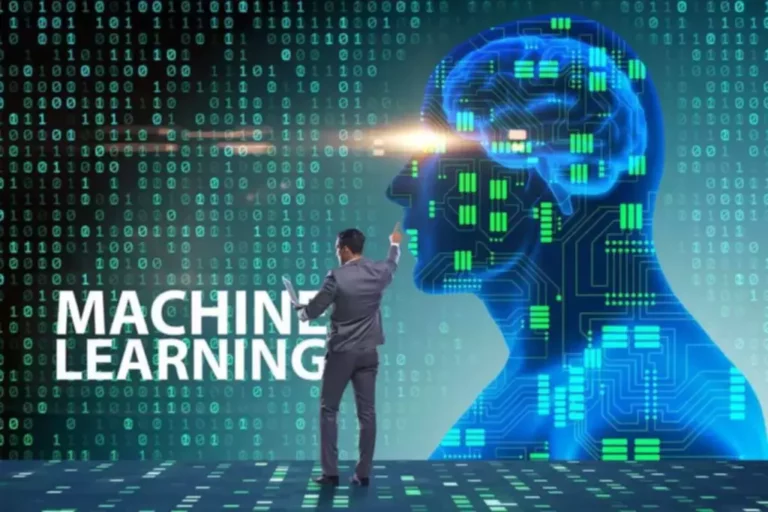Historians track human progress from the Stone Age by way of the Bronze Age, Iron Age, and so forth, gauging evolutionary development based on human mastery of the pure surroundings, materials, instruments, and applied sciences. The factory of the longer term is intuitive, smart, and loaded with sensors—all thanks to AI in manufacturing. AI-driven manufacturing enhances product security and reliability by producing exact parts, boosting efficiency and system security. The AI in aviation market was price $686.4 million in 2022 and is predicted to develop at a CAGR of over 20%. For occasion, Samsung’s South Korea plant uses automated autos (AGVs), robots and mechanical arms for tasks like meeting, material transport, and high quality checks for phones like Galaxy S23 and Z Flip 5.
Companies can train AI to navigate text-heavy structured and unstructured technical documents by feeding it important technical dictionaries, lookup tables, and different information. They can then build algorithms to assist AI perceive semantic relationships between completely different textual content. Next, a knowledge graph5A data graph is a visible illustration of a network of real-world entities and their relationship to 1 one other. Can dynamically create an information network that represents all of the semantic and other relationships in the technical paperwork and information (Exhibit 2). For instance, utilizing the information graph, the agent would be succesful of determine a sensor that’s failing was mentioned in a specific process that was used to solve an issue up to now.
Why Does Ai In Manufacturing Matter?
From predictive maintenance to personalized manufacturing, AI’s transformative influence is simple, propelling factories into the future. AI aids in supply chain administration by optimizing inventory levels, demand forecasting, and logistics. By analyzing historic gross sales knowledge, market developments, and exterior elements, AI algorithms can predict future demand extra precisely.
- A lot of conventional optimization strategies take a look at more general approaches to part optimization.
- Any production plant must implement shifts, utilizing three human employees for each 24-hour interval, to proceed working around the clock.
- He has a master’s degree in aerospace engineering and a doctorate in materials science from the University of Surrey.
- Unfortunately, 90% of drugs fail in the clinical trial phases, resetting the clock.
- The factory of the long run is intuitive, sensible, and loaded with sensors—all due to AI in manufacturing.
Implementing AI in manufacturing facilities is getting well-liked amongst producers. According to Capgemini’s analysis, greater than half of the European producers (51%) are implementing AI options, with Japan (30%) and the US (28%) following in second and third. This institutional data retained by employees through the years is essential to coaching, reskilling and upskilling new workers. To add to this, there is a excessive demand for AI-skilled expertise throughout all industries that producers should compete with to attract and retain those workers.
Ai In Manufacturing Examples
Industrial robots, additionally referred to as manufacturing robots, automate repetitive duties, forestall or reduce human error to a negligible fee, and shift human workers’ focus to more productive areas of the operation. Applications embrace assembly, welding, portray, product inspection, selecting and putting, die casting, drilling, glass making, and grinding. Business leaders should be well-educated on the potential roadblocks earlier than leaping on the AI train.

AI continues to be in relatively early levels of growth, and it’s poised to develop quickly and disrupt conventional problem-solving approaches in industrial corporations. These use instances help to demonstrate the concrete purposes of these solutions as well as their tangible value. By experimenting with AI purposes now, industrial corporations could be well positioned to generate an amazing amount of value within the years forward.
Natural Language Processing:
A good element can notify a producer that it has reached the top of its life or is due for inspection. Rather than monitoring these information factors externally, the part itself will verify in often with AI methods to report regular status till circumstances go sideways, when the part will start demanding consideration. This strategy cuts down on the volume of data traffic inside the system, which at scale can turn into a big drag on analytic processing efficiency. Newer fabrication methods have screens—human-computer interfaces and electronic sensors to offer feedback on raw materials supply, system status, power consumption, and tons of different components. People can visualize what they’re doing, either on a computer display screen or on the machine. The method forward is changing into clear, as is the range of eventualities for how AI is used in manufacturing.
Furthermore, AI-driven automation streamlines production processes, reduces errors, and will increase throughput. The combination of digital expertise and AI has the potential to usher in a new era of steady enchancment in manufacturing, surpassing traditional strategies of boosting productivity and unlocking further value. AI-powered machine learning expertise presents exciting alternatives for the way forward for Industry four.0. While many top https://www.globalcloudteam.com/ manufacturers have already reaped significant advantages from AI applications, others are just starting their journey. According to the World Economic Forum, the global manufacturing AI market was value over $3 billion in 2023 and is predicted to increase to over $20 billion by 2028. A lot of traditional optimization techniques have a glance at extra basic approaches to half optimization.
Once the information graph is created, a consumer interface allows engineers to question the knowledge graph and determine solutions for particular points. The system could be set as a lot as gather suggestions from engineers on whether or not the data was related, which permits the AI to self-learn and improve performance over time. One area by which AI is creating value for industrials is in augmenting the capabilities of knowledge staff, specifically engineers. Companies are studying to reformulate traditional enterprise points into problems during which AI can use machine-learning algorithms to course of knowledge and experiences, detect patterns, and make recommendations. AI purposes in manufacturing transcend simply boosting production and design processes.
This employee doesn’t make decisions about the whole plant’s operations; as a substitute, they excel at their particular task and constantly enhance their capacity by way of expertise and information. AI in manufacturing enables predictive upkeep by analyzing sensor data from equipment and gear. This allows producers to anticipate when tools may fail and carry out upkeep tasks earlier than a breakdown occurs.
It’s a precise digital illustration of the part and the method it will behave if, for instance, a defect occurs. (All parts have defects; that’s why they fail.) AI is necessary for the appliance of a digital twin in manufacturing process design and maintenance. Today, most of the AI in the manufacturing trade is used for measurement, nondestructive testing (NDT), and other processes. AI is aiding in the design of merchandise, but fabrication is still in the early levels of AI adoption. Automated shop tooling is within the news, but most of the world’s factories continue to rely on older equipment, usually with solely a mechanical or restricted digital interface.

Data-intensive tasks requiring innumerable historic knowledge units could be involved in process optimization. It is troublesome to find out which process variables lead to the most effective product high quality. Numerous Designs of Experiments are often carried out by manufacturing and quality specialists to optimize course of parameters, however they’re regularly costly and time-consuming. Manufacturers now have the unmatched potential to spice up throughput, handle their provide chain, and quicken analysis and development because of AI and machine studying.
Manufacturing engineers make assumptions when the equipment is designed about how the equipment will be operated. With human evaluation, there may be an extra step occurring or a step being skipped. AI in manufacturing is the intelligence of machines to carry out humanlike tasks—responding to occasions internally and externally, even anticipating events—autonomously. The machines can detect a tool wearing out or something unexpected—maybe even one thing anticipated to happen—and they’ll react and work round the problem.
Preventive maintenance is another benefit of artificial intelligence in manufacturing. You could spot issues before they arise and be sure that manufacturing won’t need to stop because of tools failure when the AI platform can predict which parts have to be up to date before an outage occurs. Systems can be created and examined in a virtual model earlier than being put into production, due to machine learning and CAD integration, which lowers the price of manual machine testing. A digital twin can be utilized to watch and analyze the production process to determine the place high quality issues could happen or where the efficiency of the product is decrease than intended. Manufacturers rightly view AI as integral to the creation of the hyper-automated intelligent manufacturing unit. Some manufacturers that have invested to develop AI capabilities are still striving to attain their objectives.
Any deviations from anticipated outcomes trigger instant alerts, allowing timely interventions to maintain product quality and process efficiency. This real-time monitoring ensures consistent manufacturing and reduces the likelihood of defects. Instead, organizations can begin ai in manufacturing industry by building a simulation or “digital twin” of the manufacturing line and order e-book. The agent’s performance is scored primarily based on the fee, throughput, and on-time supply of products.
AI facilitates customized manufacturing by analyzing buyer preferences and information to create personalized merchandise. Mass customization becomes feasible as AI efficiently adapts manufacturing lines to produce distinctive items. This approach caters to individual customer needs with out sacrificing manufacturing pace, providing a aggressive edge and higher customer satisfaction.
